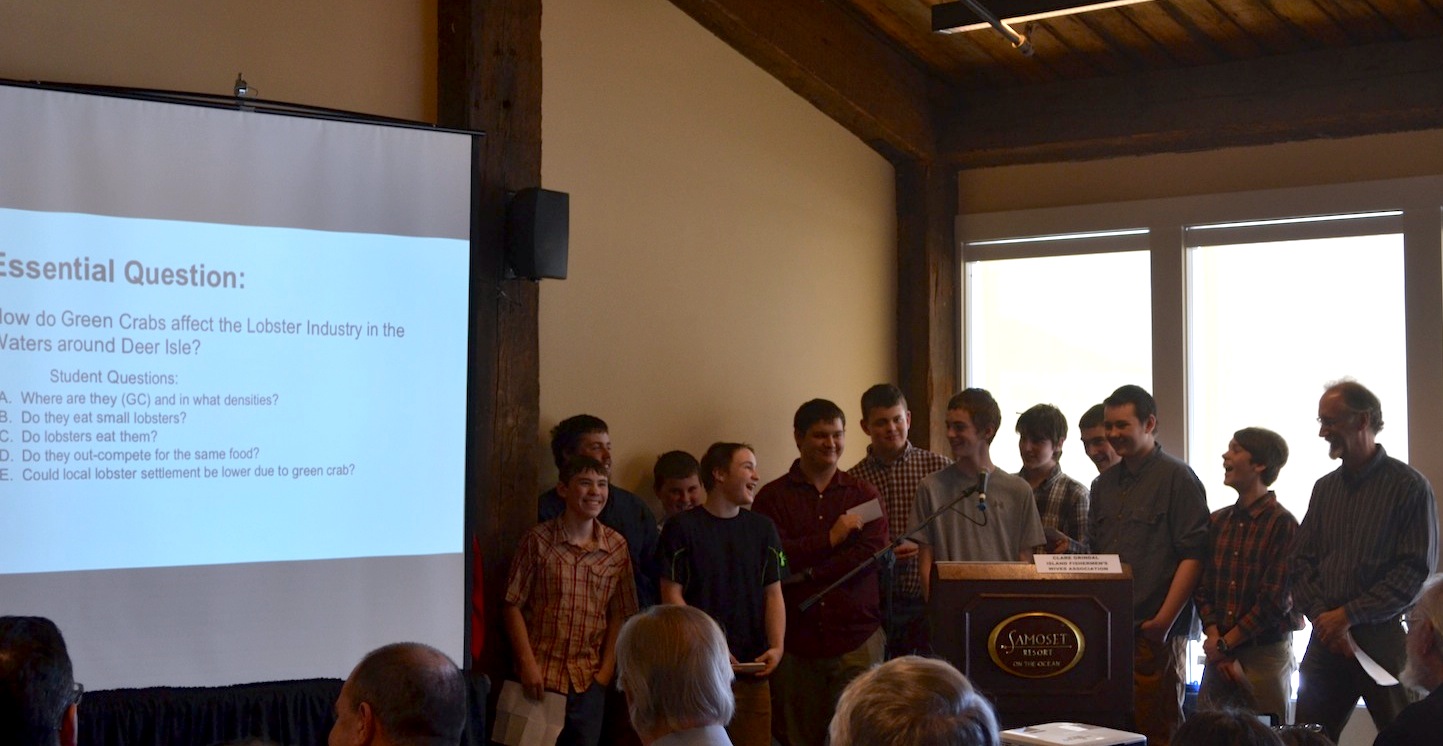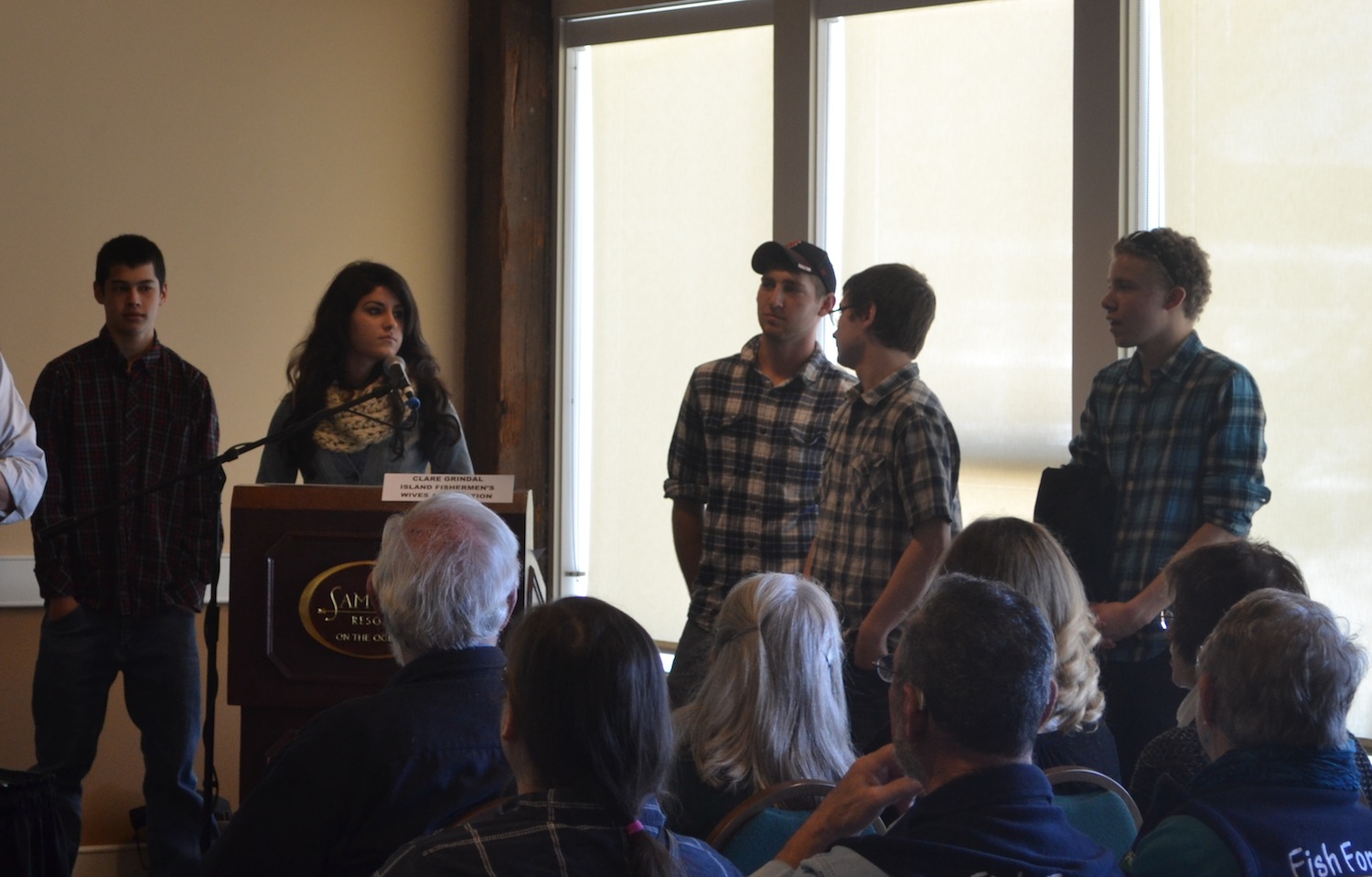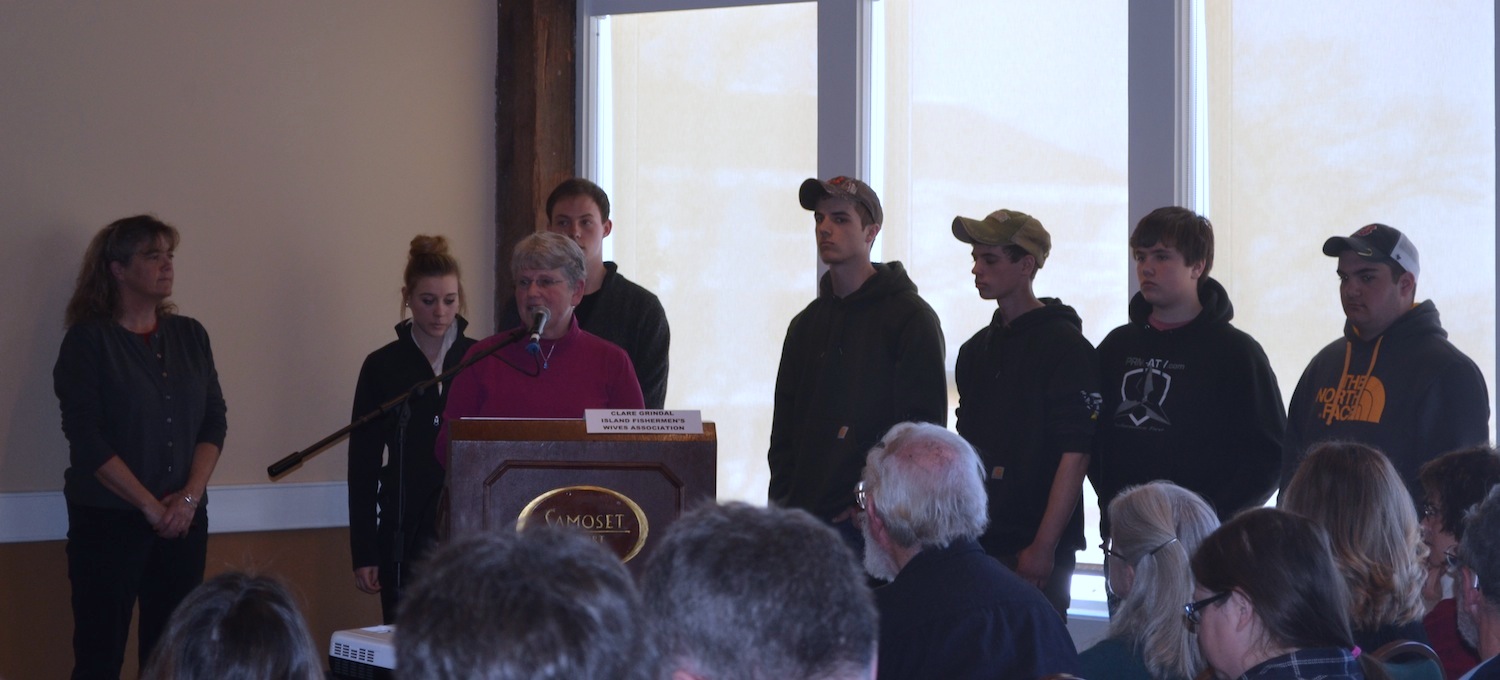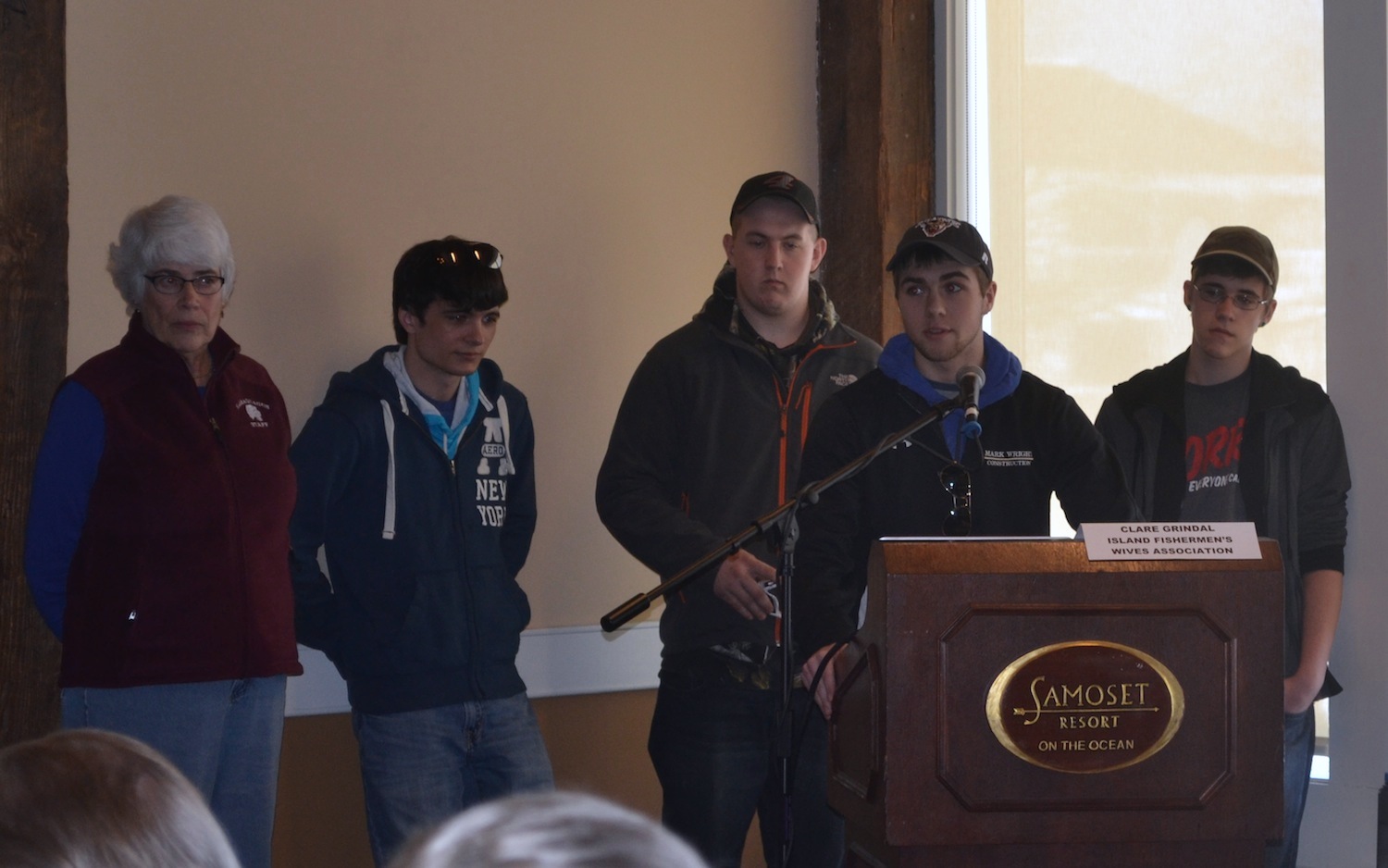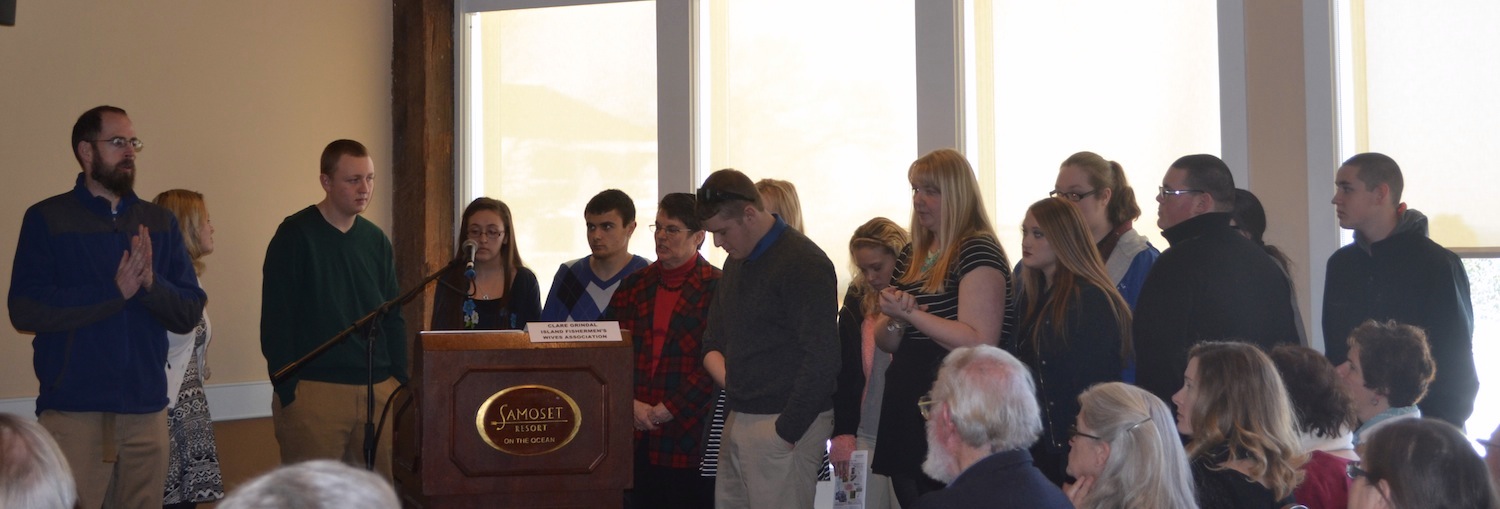It has been a busy time for collaborative meetings! In the spirit of being super efficient, Alice and I managed to fit in three major meetings over the course of four epic days off the island last week. The first two days were spent at the Island Institute in Rockland meeting first with Education Director Yvonne Thomas about our joint efforts to develop aquaculture curriculum and secondly with Yvonne and a host of other movers and shakers with the Eastern Maine Skippers Program. Hurricane recently received a grant from EPSCoR’s Sustainable Ecological Aquaculture Network (SEANET) program to develop three aquaculture sites on the island: first for sugar kelp and later for oysters and scallops. More specifically, we have money for students to set up these sites. The goal of the program is to work with local schools and other local partners, such as the Island Institute and Herring Gut Learning Center, to bring aquaculture education and real life management of aquaculture sites into the hands of middle and high school students. We are ramping up to develop and pilot our curriculum this upcoming school year with a plan to get students to put their own sugar kelp aquaculture site in the water in the spring. These will be sites that students can monitor and modify for years to come, enabling students to not only cultivate these areas, but also collect data that can be widely distributed to any students, fishermen, or researchers who have an interest.
Students during the 2014 Eastern Maine Skippers kickoff event spent time in Hurricane's intertidal doing green crab research.
After some great conversations with Yvonne, we launched into a full day meeting at the Institute with a variety of educators and other stakeholders associated with the Eastern Maine Skippers Program (EMSP). This program an amazing effort to bring project based learning into local high schools to help strengthen student engagement, specifically around topics and training critical to Maine’s coastal economy. Penobscot East Resource Center (PERC) based out of Stonington is spearheading the effort and Deer Isle-Stonington High School (DISHS) is one of the high schools pioneering the curriculum with a full in-school program. Many other high schools up and down the coast of Maine in fishing Zone C (North Haven to Eastport) participate as part of an extended regional program and adapt the curriculum as it fits within their own school structure. Some schools implement the program as an after-school component, some as a full class, and some integrate material into existing classes, but all students associated with EMSP get an opportunity to learn broader skills and knowledge associated with the fishing industry. The program has a three pronged approach, giving students the skills they need to operate on the water, at the table with other stakeholders, and in the office as they manage their own assets. This comprehensive view of what it takes to be a successful fisherman or to understand the complexities of the fishing industry in general is one of the greatest assets of the program and what makes it so appealing to students as well as community partners looking to develop and support coastal youth as true stakeholders in their futures.
Hurricane Island will host the second kickoff event (read about last years event here) for EMSP students and teachers at the beginning of the school year, allowing all participants to meet and get to know each other in addition to laying the foundation for the year long project that they are about to embark on. Last year the project tackled the invasive green crab problem, this year the project looks at the lobster industry specifically asking the students: Who or what eats/buys lobster? What impact can we/I have? The first question allows a lot of freedom for students to choose to look at lobsters from an ecological perspective or from a more purely economical perspective. The question about ‘what impact they can have’ is similarly open to student interpretation, allowing a variety of options for students to really dig into the material from a standpoint that is relevant and interesting to them. It will be great to see what the students come up with this year for their individual projects when they come to the retreat at the beginning of October. Check back here for updates!
Students share the marine debris art sculptures they created during the 2014 Pathways 101 program on Hurricane
Our final two days of meetings were hosted by Deer Isle-Stonington High School (DISHS) itself and we got a chance to meet with the teachers and other community partners associated with their Pathway program. Pathways started out as a Marine Studies track for students who wanted to specialize their education in preparation for any post-secondary option dealing with marine related issues. DISHS has also blended Pathways with EMSP using EMSP as an “honors” track that more specifically gears marine studies for students intending to pursue a commercial fishing license. This year the Pathways program is expanding to include an Arts Pathway in addition to the Marine Studies and the goal is to add a Healthcare related track in the future. It was amazing to hear about some of the cool classes associated with each of the tracks! Most of the Pathways classes are team taught allowing options like Chemistry through Art or Marine Studies Health and Phys Ed., combinations that really demonstrate the relevancy of the topics to students.
I got to spend most of my time with Seth Laplant who is adapting a Biology class to the Marine Studies track and has a lot of programming planned that takes advantage of local resources. Monitoring bacterial colonies on the shoreline, looking at green crab genetics, blood worm osmosis, and performing marine organism necropsies make this class not only super relevant but also super fun! It was great seeing all the people who were invested in making these programs work. Island Heritage Trust, Rural Aspirations, Bowdoin College, Opera House Arts of Stonington, Haystack Mountain School of Crafts, and PERC were just some of the people and organizations that were represented over the course of the two days.
Even though it was an exhausting session of meetings, we left with a much better picture of all of the wonderful collaborations going on up and down the coast and we are extremely excited to be part of them. Over the next couple months we will be solidifying aquaculture curriculum and planning for the EMSP and Pathways kickoffs on Hurricane. Updates on everything will show up here so keep an eye out to learn more!


